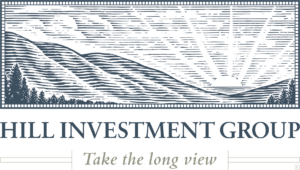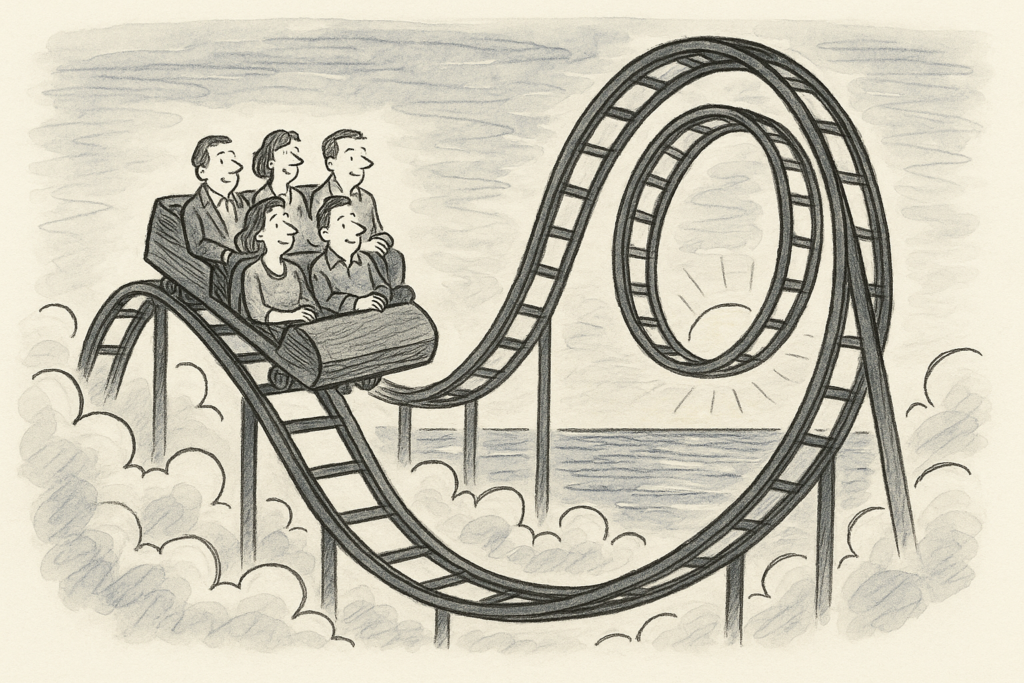Details Are Part of Our Difference
Embracing the Evidence at Anheuser-Busch – Mid 1980s
529 Best Practices
David Booth on How to Choose an Advisor
The One Minute Audio Clip You Need to Hear
Author: Matt Zenz
Signal vs. Noise: Cutting Through the Clutter of Financial Advice Online

It’s never been easier or more overwhelming to get financial advice. Open your phone and you’ll likely see someone with a large following and bold opinions telling you what to do next with your money. Scroll your feed and it’s hard to miss: dramatic predictions, attention-grabbing “can’t-miss” trades, and influencers claiming to decode the secrets of building wealth.
Welcome to the age of the “finfluencer.” While some have genuine experience, many are focused on views, and not your best interest.
At Hill Investment Group, we believe that real advice should be simple, clear, and grounded in evidence, not hype. That’s why we’re launching a new series to unpack misleading ideas that circulate online or in print.
Our goal? To inform, not entertain. To offer substance, not speculation.
We won’t chase the latest trend. We’ll challenge it with patience, perspective, and real-world research. That’s because, when it comes to your financial future, having a long-term plan that is built on decades of data and thoughtful execution matters more than a viral headline.
We hope this series gives you and those you care about a steady hand in a noisy world. We’ll start next month with one of the most common (and flawed) ideas making the rounds today.
Heard something at work, at golf, or on social media that has you asking, “Should I be paying attention to this?”
Feel free to share it with us. We’d love to help unpack it. Submissions will remain confidential unless we get your permission to share anonymously. Send to: zenz@hillinvestmentgroup.com
Please note: Submissions are reviewed for educational purposes only and do not constitute personalized investment advice.
Welcoming Ryan Clinton: A Strategic Addition to Hill and Longview
 We’re thrilled to welcome Ryan Clinton to Hill Investment Group and Longview Research Partners as our new Portfolio Manager, starting June 2nd, 2025.
We’re thrilled to welcome Ryan Clinton to Hill Investment Group and Longview Research Partners as our new Portfolio Manager, starting June 2nd, 2025.
Ryan brings deep experience in portfolio management and investment research, and he shares our passion for evidence-based investing. His thoughtful, research-driven approach and attention to detail will strengthen our ability to serve clients with care and conviction.
It’s always exciting to grow our team with people who align so clearly with our mission and values. We can’t wait for you to get to know Ryan—we think you’ll be just as impressed as we are.
Ryan joins us from Dimensional Fund Advisors (DFA), where he spent nearly six years in various investment roles, including managing DFA’s flagship core ETFs. His expertise includes:
- Portfolio implementation and trading strategy
- Deep knowledge of systematic, evidence-based investing
- Communicating complex strategies with clarity
Ryan’s dual role will span both firms: helping guide client portfolios at Hill and playing a strategic part in the growth of our ETF, The Longview Advantage (EBI). Since its February 2025 launch, EBI has garnered significant attention in the industry, and Ryan’s addition signals our continued momentum and commitment to excellence.
“Ryan’s arrival marks an important next chapter for our firm and the ETF,” said Matt Hall, co-founder and CEO of Hill Investment Group. “His background and values are a strong match for our culture. This is just the beginning.”
Based in Charlotte, North Carolina, Ryan earned his Bachelor of Arts in Economics with a minor in Information Systems from the University of North Carolina at Chapel Hill.
Ryan will be making an impact quickly, and we’re excited for clients and colleagues alike to benefit from his presence. If you haven’t met him yet, you will soon. Please join us in welcoming Ryan to the team!
Want the Full Details?
You can read the full press release here for a deeper look at Ryan’s background and his new role.
A Timely Reminder to Keep Going
 Market volatility is back in the headlines, and if you’re feeling uneasy, you’re not alone. Over the past month, markets have given us another sharp reminder of what it means to be an investor. On April 2nd and 3rd, the S&P 500 fell a combined 10.7%—a drop that understandably triggered anxiety for some. And just when the idea of sitting on the sidelines might have felt tempting, the market turned on a dime. On April 9th, the S&P 500 gained 10.5% in a single day, quickly recapturing much of the prior decline.
Market volatility is back in the headlines, and if you’re feeling uneasy, you’re not alone. Over the past month, markets have given us another sharp reminder of what it means to be an investor. On April 2nd and 3rd, the S&P 500 fell a combined 10.7%—a drop that understandably triggered anxiety for some. And just when the idea of sitting on the sidelines might have felt tempting, the market turned on a dime. On April 9th, the S&P 500 gained 10.5% in a single day, quickly recapturing much of the prior decline.
That’s the market. It moves. Sometimes violently. In hourly bursts. Often unpredictably. And always in response to new information.
One of the best examples of this came on April 9th at 1:18 p.m. Eastern, when President Trump posted on Truth Social that he would lift tariffs on all countries other than China. Within ten minutes of that post, the S&P 500 had surged nearly 6%. Markets are incredibly efficient at digesting new information, whether it’s about trade policy, inflation, interest rates, or elections. The current price of a security reflects the consensus expectations of millions of participants, each with skin in the game.
So what should you do in the face of this kind of uncertainty?
Stick with your plan.
At Hill Investment Group, every client portfolio is built around a long-term strategy, not short-term noise. Your plan was designed with the understanding that markets will experience sharp moves, both up and down. We don’t pretend to know what tomorrow’s headlines will be or how the market will respond to them. What we do know—based on decades of data and mountains of research—is that markets are priced to deliver a positive expected return every single day. That’s why being in the market is so critical.
Missing just a handful of the best days has an outsized impact on long-term results. And as we just saw, those days often come immediately after the worst ones. Getting out and waiting “until the dust settles” may feel comforting, but it’s rarely profitable.
Global diversification is also part of the plan.
This year offers a good reminder of why. While the S&P 500 is down 9.7% year-to-date as of April 22nd, international developed and emerging markets are actually up 6.3%. No one can consistently predict which areas of the market will outperform in the short term. That’s why we build portfolios that don’t rely on a single country or asset class to deliver returns. Diversification ensures that when one area of the market struggles, others may pick up the slack. It’s not just about reducing risk—it’s about improving the odds of long-term success.
Instead of reacting to volatility, we encourage our clients to focus on what can be controlled—things that actually add value:
- Tax Loss Harvesting – When markets decline, we actively harvest losses to offset gains elsewhere in your portfolio. This reduces your tax bill while keeping you invested.
- Rebalancing – We monitor portfolios to ensure your exposure to risk remains aligned with your plan, buying when assets are down and trimming when they’ve run up.
- Staying the Course – Most importantly, we help you stay focused on the big picture. Financial goals aren’t achieved in a week or a month—they’re met over years and decades by maintaining discipline and a long-term perspective.
Trying to respond to every market move or every tweet is not an investment strategy. It’s gambling. It’s a recipe for regret.
So yes, volatility has returned. And no, we can’t predict what comes next. But we can control how we respond. And our response is grounded in evidence, backed by decades of research, and aligned with your goals.
We’re here to help you take the long view. That’s not just a tagline—it’s a philosophy that has helped our clients build and preserve wealth through all kinds of markets. And it’s one we continue to believe in today.
Stick with it.
Hill Investment Group is a registered investment adviser. Registration of an Investment Advisor does not imply any level of skill or training. This information is educational and does not intend to make an offer for the sale of any specific securities, investments, or strategies. Investments involve risk, and past performance is not indicative of future performance.

